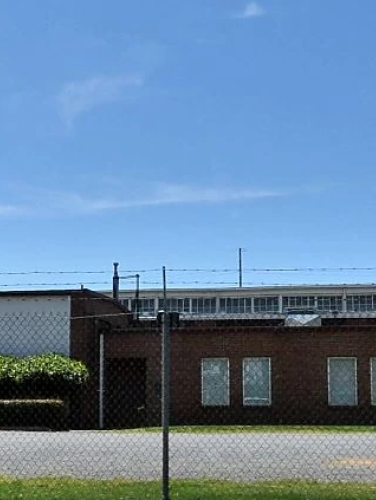
Armature Winding Complex
(ca. 1924)
Home of an early 20th-century electric engine repair company whose services supported the growth of Charlotte’s textile industry during the transition from coal-power steam to electricity.
1001 W. 1st St. & 520 McNinch St., Charlotte, NC 28202
The group of structures comprising the Armature Winding Company Complex housed enterprises that made significant contributions to Charlotte's emergence as a major textile manufacturing and distribution center in the late 19th and early 20th centuries. Representative of Charlotte’s industrial warehouse and mill construction of the early 1900s, the complex serves as an important reminder of an industrial district that grew along West Morehead Street due to its proximity to the Piedmont and Northern Railroad tracks and the Wilmore streetcar line. Its presence in the McNinchville community within Charlotte’s Third Ward also demonstrates how an absence of zoning codes can negate the residential intentions of urban planners. The Armature Winding and Ferrofix Brazing Company occupied the main building, constructed by the Thies-Smith Realty Company from designs by local architect Fred L. Bonfoey (ca. 1872-1933), a prolific designer of bungalow-style homes primarily located in the Elizabeth, Dilworth, and Plaza-Midwood neighborhoods.
Property Quick Links
Founded in 1907 by Louis Franklin Stratton (1860-1930) and his two sons Wilson Levi (1899-1971) and George Frederick Stratton (1897-1971), the Armature Winding and Ferrofix Brazing Company repaired electric components for use in looms and textile equipment just as Charlotte’s textile mills transitioned from coal-generated steam to electric power, making the company an essential service provider for textile mill operations throughout the Piedmont sections of the two Carolinas. Cotton mills could not have proliferated in this area during the early 20th century without the infrastructure support of firms like Armature. The company also repaired transformers for Duke Power, manufactured transformer-cooling fans, and distributed electric motors for General Electric Company, along with a variety of other electrical items.
Following completion of the main building, Armature purchased a neighboring warehouse building (ca. 1925) originally used by the Southern Specialties Company for the manufacture of silk and cotton products, as well as a small tenant house (ca. 1926) likely built by the former property owner (Standard Oil Company) as worker housing. Later acquisitions of other adjacent properties gave Armature control of the entire block by 1949, which the company used to construct several smaller outbuildings including a parts cleaning building, sandblasting shed, oil-fired stripping oven, coal bin, open storage building, and several fuel tanks. The company remained in the Stratton family until 1975, when George F. and Wilson L. Stratton, Inc. – the holding company of Armature Winding Company – merged into Power Products Manufacturing Company, which continued to do business as Armature Winding Company. The company ceased refurbishing electrical equipment in the 1970s, serving instead as a distributor for equipment manufactured by the General Electric Company.

